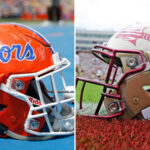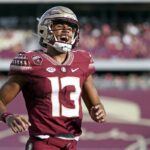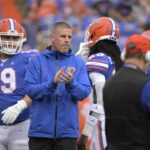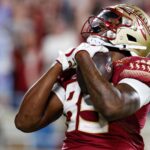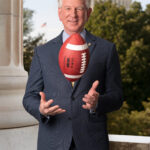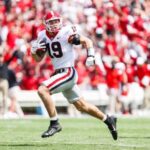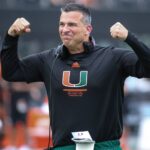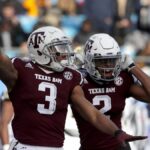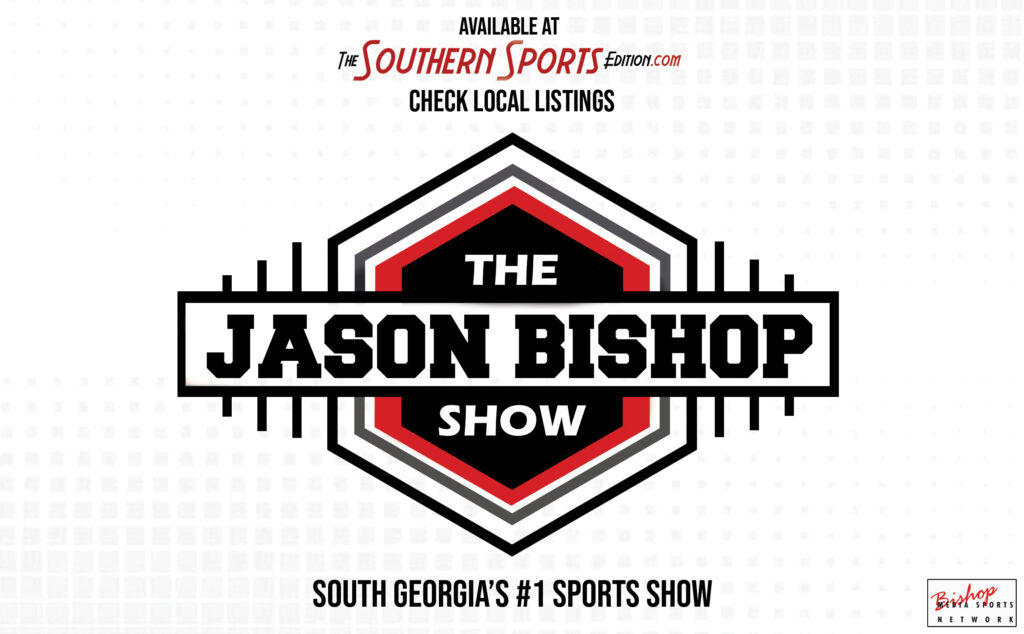Robert Craft
Revamping NIL In Florida
 By: Robert Craft
By: Robert Craft
TheSouthernSportsEdition.com news services
Less than three years after Florida enacted a law to help athletes and universities get a head start in the profitable NIL space, now the legislature is ramping up efforts to make sure those groups don’t get left behind.
When the State House and Senate convene next week for a two-week session, one of the main topics tackled will be revamping Florida’s existing NIL law.
“In 2020, Florida was proactive in creating legislation which governs how college athletes can be compensated for use of their names, images and likenesses,” House Speaker Paul Renner wrote in a Friday memo to House members and staff.
“However, the recent enactment of NCAA regulations regarding athlete compensation has put many states with such laws at a disadvantage, causing a need for Florida to revisit our current law. We recognize the need to address this issue in a timely manner so our collegiate teams can remain competitive.”
The 2020 Florida law made it permissible for college athletes to profit from their name, image and likeness, but it prohibited coaches, staff and other representatives of universities from being part of the process.
That became an issue when the NCAA subsequently ruled that all athletes could earn money from NIL deals as long as they followed their state laws, which meant those in Florida and a handful of other states would actually be at a disadvantage.
Several states promptly repealed their state laws once that happened, but two bills in Florida stalled during the 2022 session.
The new House legislation will be referred to the Education and Employment Committee, according to Renner’s memo. The Senate version will go to the Post-Secondary Education Committee.
Virtually, all college coaches claim it has led to widespread tampering and even more illegal recruiting than usual, and many programs worry about the effect it is having on locker room chemistry.
At the same time, people also believe it is long overdue that college athletes have the right to earn money through marketing agreements and other above-board business opportunities.
The proposal by Rep. Chip LaMarca, R-Lighthouse Point, would align Florida law with those in other states with schools that compete with Florida universities, which generated $1.1 billion dollars in revenue last year, according to a House analysis.
This Bill would allow schools to set up space on campus for NIL entities to meet athletes and for university employees to introduce athletes to companies willing to pay them to use their name and likeness.
When the NCAA issued new NIL guidelines last October to allow schools to have a more active role in connecting athletes with NIL entities, Florida schools — such as the University of Florida, University of Central Florida and Florida State University — suddenly found themselves at a competitive disadvantage.
The Bill specifically states that a school is not required to identify or facilitate NIL opportunities for students, or that an NIL deal qualifies a student as a university employee.
Also, they amended the proposal shielding schools and coaches from liability related to damages resulting from routine decisions — like benching a player — because schools have sovereign immunity.
The proposal has two more committee stops before it is introduced to the House floor.
As always, the unintended consequences could be problematic. On its face, it’s much better they are in charge of managing the brand and not relying on outside or non-auditable parties.
You have to assume that this will lead to some sort of mutually agreed salary cap by conferences at some point down the road.
I believe this will have universities explaining why they are not using new TV revenues and other income sources to pony up for 5 stars, rather than asking their alumni/booster base to take on the additional burden of NIL.
War Chief
 By: Robert Craft
By: Robert Craft
TheSouthernSportsEdition.com news services
Most Florida State fans and media expected to see improvement from the FSU football team in 2022; few could have honestly predicted that the Seminoles would go 10-3 with wins over the likes of Florida, Miami, LSU and Oklahoma after their lackluster 2021.
Coming into the 2022 season, it would be Jordan Travis’ first year as a full-time starter but his third year in the system. On top of that, it would be Travis’ first opportunity to be the unquestioned leader of the Seminoles’ offense, which comes with large potential upside.
Travis not only emerged as Florida State’s best starting quarterback since Jameis Winston, but one of the very best in the country.
In leading the Seminoles to a 10-3 record, Travis completed 226 of 353 passes (64.0 percent) for 3,214 yards and 24 touchdowns with five interceptions. He also rushed for 417 yards and five touchdowns and even hauled in a touchdown catch.
Travis was named second-team All-ACC. He showed great improvement as a passer and appeared completely confident in his third season in Norvell’s offense.
Since the Seminoles didn’t have a proven backup, some worried that the season could be derailed at any moment.
Fortunately for FSU, backup QB Tate Rodemaker showed great composure and led the Seminoles to a 35-31 win over Louisville.
Rodemaker’s stellar performance in a hostile environment, along with Travis’ ability to rebound quickly from injury is what alleviated most of those concerns.
After Travis’s start against Boston College, it turned out he would remain healthy for the rest of the year, and play in all 13 games.
Based on Travis’ performance and Rodemaker’s improvement as a redshirt sophomore, the Seminoles discovered one of the best quarterback situations in college football by the end of the season.
Travis didn’t waste much time in announcing that he would return and he already is appearing on some early Heisman predictions. Rodemaker and AJ Duffy are also expected to be back, and the Seminoles also will bring in freshman Brock Glenn, a four-star prospect from Memphis.
Travis not only led Florida State to its first 10-win season since 2016, but according to Pro Football Focus, he was the best Power 5 quarterback in the nation.
The way Jordan Travis played in the second half of this season, and with the moves the Seminoles are making in player retention and in the transfer takes, I think Florida State is poised to take another big step next season.
Rome Wasn’t Built In A Day
 By: Robert Craft
By: Robert Craft
TheSouthernSportsEdition.com news services
With Florida’s season over and the early signees on board for 2023, Florida Gators’ coach Billy Napier has officially turned the page on his first year with the Gators.
Following Florida’s regular season finale at Florida State, a recruiting drought went into effect on Nov. 28. A flood of transfers and bowl opt-outs soon followed.
Sixteen of UF’s 22 outgoing transfers announced they were leaving after the FSU game, although a handful of players stayed with the team through the bowl. The Gators also had four key starters skip the Las Vegas Bowl after declaring for the NFL Draft.
To complicate matters more for Napier and his assistant coaches, Florida’s selection for the Dec. 17 bowl meant the trip would take away from their in-home visits before signing day. Two days after the contact period opened on Dec. 2, UF was matched up with Oregon State.
With the team flying out on Dec. 13, Napier managed to make 30 different stops on the recruiting trail over a five-day stretch. The contact period ended on the day Florida returned from the bowl game, so he had to fit in enough in-home visits and trips to high schools before traveling to Las Vegas.
During the first week of the contact period, Napier likely made more recruiting stops than any coach in the country.
The juggling act of bowl practices, portal exits and recruiting visits created a challenging and hectic month for Napier and his staff to close out 2022.
The Gators ended the year on a low note, dropping their third straight game with a depleted roster. Despite the lopsided loss to Oregon State and UF’s 6-7 record, Napier still expressed that his team made progress over the course of the season.
Despite the losses on the field and the portal, Napier and his staff scored some big wins on the recruiting trail. UF inked a top 10 class on signing day, with 15 blue chips.
Quarterback signee Jaden Rashada has not enrolled at the University of Florida for the spring semester. Rumors are he has requested to be released from his National Letter of Intent.
With 80 percent of the class holding a four-star rating or higher, it marked Florida’s best blue-chip ratio since Urban Meyer’s No. 1-ranked recruiting class in 2010.
Prospects from Florida also comprised 70 percent of the Gators’ class for the fourth time since 2000. Most importantly, Napier and his staff got a feel for the recruiting landscape along with a better understanding of how to navigate the new and ever-evolving NIL market.
The Gators not only flipped some of their top signees such as Rashada (Miami), Dijon Johnson (Ohio State) and Roderick Kearney (Florida State), but down the stretch they also prevented Alabama, FSU and Michigan from poaching pledges Kelby Collins, Andy Jean and Aaron Gates respectively.
As Florida prepares to welcome 20 mid-year enrollees to campus and begin Phase 1 of the offseason program, Napier reflects on his first year at UF and what the future holds for 2023.
It created the silly narrative of questioning whether Napier is the savior that many of these same fans made him out to be when he was introduced as the head coach in December.
So, consider this a recommendation not just to UF supporters, but all those irrational college football fans with knee-jerk reactions to many recruiting developments involving their program: relax and take a deep breath. Rome was not built in a day, and neither were your delusions.
Napier and the rest of the program needs time to get there. Who knows if he’s going to be a transformative coach? Time will tell if Billy Napier will be the SEC’s next big thing, or if he will end up a small flash in a big pan. He clearly inherited a so-so roster from Mullen, so this recruiting bounce back is a good sign.
An uphill summit is never climbed immediately. The same goes for consistently recruiting top-10 national classes.
While UGA repeats as national champions, Napier has challenged UF’s players and staff to stay focused on what winning looks like to improve the team’s long-term trajectory.
Gator fans, let’s not kick sanity to the curb or kill the Billy Napier honeymoon after his first year. Quit the mental gymnastics, and enjoy the ride
Return Of The Seminoles
 By: Robert Craft
By: Robert Craft
TheSouthernSportsEdition.com news services
It started with a block in New Orleans and ended with a sack in Orlando. Those two moments felt like bookends to a resurged Florida State football program.
I don’t know if Florida State football is “back.” A Cheez-It Bowl victory is a step in the right direction.
But man, how sweet it must feel, a team that went from five wins a season ago to a 10-wins today.
It’s not easy to double your victory total in a year, but that’s exactly what the Florida State football team did this season. So, what outlook does that give the Seminoles in the 2023 season?
Florida State has already received a slew of good news about next season, with stars and starters like Jordan Travis, Trey Benson, Mycah Pittman, Robert Scott, Kalen Deloach, Tatum Bethune, Jarrian Jones, Renardo Green and others announcing they are coming back for the 2023 season.
“The Big Three” we still don’t know about are defensive end Jared Verse, defensive tackle Fabien Lovett and defensive back Jammie Robinson.
Verse and Robinson have said they will make their decisions in the coming days. Lovett hasn’t spoken publicly in weeks.
Norvell and his staff have done yeoman work in the portal this cycle. They’ve brought in one of the top offensive tackles Jeremiah Byers from UTEP), a potential starting guard (Casey Roddick from Colorado), two of the top tight ends (Jaheim Bell from South Carolina and Kyle Morlock from Shorter), maybe the best defensive tackle (Braden Fisk from Western Michigan), a rising-star defensive tackle (Darrell Jackson from Miami) and arguably the top cornerback ( Fentrell Cypress from Virginia).
That’s six potential starters; seven important rotation guys acquired in about three weeks.
To speak frankly, Norvell needed to hit the portal to supplement FSU’s lackluster high school recruiting. The Seminoles’ 2023 signing class ranked 19th; the 2022 class ranked 24th.
Sustainability when building by the transfer portal is a legit question. FSU, LSU and USC, among others, brought in big transfer groups in the offseason, and all had successful seasons. Does this foreshadow what the future of college football will look like?
I think most would agree that Florida State was the best team in the ACC during the second half of the season, and I think the Seminoles are going to be better in 2023.
I can’t say the same for the Clemson Tigers, the team that had a stranglehold on the ACC for the past decade.
With the way Jordan Travis played in the second half of this season, and with the moves the Seminoles’ staff is making in both player retention and in the transfer portal; Florida State is poised for another growth spurt next season.
And unless something changes at Clemson, (with declining talent in both players and coaches), there’s a very good chance they will continue to fall.
I won’t be the only person who writes this during this coming offseason, but I will definitely be among the first: For the first time since 2014, Florida State will be favored to win the ACC next season.
NIL Goes To Washington
 By: Robert Craft
By: Robert Craft
TheSouthernSportsEdition.com news services
NIL and their laws remain a controversy in college athletics.
That’s because, for all athletes, overarching rules have not been set. NIL has been around for a long time, so why does it still feel like lawless territory?
While its’ monetary impact has been helpful to the sport, we still have a ways to go in reforming and refining NIL rules until it’s most beneficial to all parties.
The stability of it on a national level continues to be the top concern of everyone across college sports. Until we see the rectification of that concern, those feelings will not change, whether we’re talking about rules for commissioners, coaches, or the athletes themselves.
With the inception of NIL in July 2021, decades of NCAA monitoring on student-athletes turning a profit turned into a blind eye. The script has been flipped for coaches, fans and administrators.
More importantly, daily conversations with student-athletes have altered, even at the high school level.
If there is any lesson after a year into the new era, it’s that NIL will continue to impact on the outcome of sporting events and the revenue collection.
For years, the NCAA banned boosters from paying students for attending a certain school or for their performances on the field. Those rules are still very much in place, yet NIL allowed a backdoor for individuals to move cash to athletes thanks to collectives.
There are now more than 200 collectives across the Division I landscape. Typically, founded by prominent alumni and influential supporters, school-specific collectives pool funds from a wide network of donors to create financial opportunities for student-athletes through an array of activities and events.
Independent of a university, collectives have potential to serve a variety of purposes. Most often, collectives pool their resources, help facilitate NIL deals for athletes, and invent ways for influential athletes to endorse their brands. Athletes and recruits benefit from lucrative NIL deals.
Tommy Tuberville, the former college football coach and now State Senate Representative for Alabama, plans to release a draft of the bipartisan bill aimed to regulate name, image and likeness in spring 2023. Tuberville said he “does not foresee federal legislation being enacted in the next Congress that would include an antitrust exemption for the NCAA”.
Earning antitrust exemption status has long been a goal for college athletics and their governing bodies. With multiple class-action lawsuits having been brought up against the NCAA, no organization has been more aggressive than the Supreme Court’s unanimous decision in NCAA v. Alston in 2021. The ruling stated the NCAA was violating antitrust law by placing limits on the education-related benefits schools can provide to athletes.
Approaching Capitol Hill showed how administrators truly felt about NIL – uncomfortable. Coaches across the country, specifically in football and basketball, feel similar. On the contrary, coaches + admins are promoting the need to get with the times or be left behind.
Fans are left to ponder what the future of college athletics will look like. While regional conferences are torn apart over TV contracts, speculation on NIL runs rampant.
Did this recruit take a pile of cash as a bribe? Will this revamped transfer-portal team find success?
All of these answers remain unfound. A confused landscape will create nothing but fear and anger. The NCAA needs a double dose of clarity regarding NIL rules and enforcement.
The Real Heisman
 By: Robert Craft
By: Robert Craft
TheSouthernSportsEdition.com news services
One of the biggest success stories of the last two years in college football is UGA’s Brock Bowers.
The Georgia star won the Mackey Award this year as the nation’s best tight end and is emerging as one of the top players in the sport.
His transition to the college level wasn’t the easiest though. After all, he didn’t have a senior season to end high school. That made things tough.
It seems like he’s handled the leap from high school to college just fine. In two years with Georgia, Bowers has 1,608 yards, 19 touchdowns and a national championship ring.
He’s a big reason why they’re heading back to the College Football Playoff with a shot at another national title.
At first, Bowers said he felt a little behind the curve when he arrived in Athens. But the staff got to work to get him up to speed, and it’s paying dividends.
Bowers’ production after two seasons has already matched that of former first-round tight ends like Florida’s Kyle Pitts, but per NFL rules, he’ll have to play a third year before moving on to the big leagues.
The 6-foot-4, 230-pound tight end shared his goals for the 2023 season and how he wants to grow before taking off the Bulldog red.
“I guess catching balls is probably one of my stronger suits and I just want to keep working on getting stronger and bigger, put on some weight,” Bowers stated.
Bowers may have already added weight since the preseason roster update this fall but his NFL target is likely around 245 to 250 pounds. Even without the extra bulk, the former No. 1 tight end recruit is still the No. 1 tight end prospect on most big boards for the 2024 NFL draft.
Brock Bowers has already become the greatest tight end in Georgia history. Now he’s closing in on becoming the school’s greatest receiver.
With a possible 2 games remaining this season and an entire Junior season left, it is not out of the realm of possibility that we could see Brock Bowers become the all-time leader in receiving touchdowns, as well as receiving yards for the University of Georgia. An accomplishment that would all but cement his legacy as not only Georgia’s greatest tight end, but the greatest receiver in school history as well.
Bowers is arguably the most dangerous pass catcher in football as the best tight end in the NCAA. He would’ve been the highest-drafted player at his position if he entered this year. Looking at everything it’s crazy to think all he’s accomplished in only 2 years of college ball.
On another note, Caleb Williams was just recognized as the best player in college football as the 2022 Heisman Trophy winner. In my opinion the best player in college football is Brock Bowers.
Blowing It Down
 By: Robert Craft
By: Robert Craft
TheSouthernSportsEdition.com news services
Meet rock bottom. Square one. That’s good news or bad news depending on your viewpoint.
Maybe it had to sink like this to inspire the type of reform the Miami Hurricanes are set to see.
But after two decades of mediocrity, it is time.
Welcome to the nuclear reboot.
The season ending loss to Pittsburgh ended too many weeks of opponents throwing upside-down U’s. A tweet sent out by Pittsburgh’s athletic department Saturday night ridiculing UM for kicking a field goal to avert a shutout says it all.
The entire state of being is really bad right now. It stinks. It’s a character tester. Just don’t play the blame game: the list runs too deep and it is irrelevant in today’s discussion.
Does it matter if a roster devoid of impact talent is Manny Diaz’ fault? Or Blake James’ fault. Does Al Golden still get blamed for not firing Mark D’Onofrio?
Does Mario Cristobal get his hand slapped in year one for everything not going perfectly after arriving 12 months ago and staffing an entire football program in a few short weeks.
It is time to look forward, not backward. The rear-view mirror is absolutely horrifying. Rip that thing off the dashboard and smash it into sand, it’s time to embrace the change.
The disastrous 2022 football season is over, but you won’t recognize the Miami Hurricanes come September. Miami hired Cristobal to build a championship team, and his job really starts now. This minute. This second. Time’s ticking.
All was not a waste of time in 2022. Cristobal laid a foundation of expectation. He solidified the University investment in football and was the driving force behind the NIL operations that now exist behind the scenes.
Cristobal can’t be happy about what he found at Miami, or anything else that went wrong this year in this season of hell. It has been a whirlwind, but as far as I know, his agent is not trying to find him a new job.
He wasn’t a candidate at Auburn.
Cristobal must embrace the challenge of the fix here and the work involved. The bottom line is that the Hurricanes will have about 40 new players next season. That’s half a roster.
It is harsh. It is cold. The roster purge is about to take place, which could result in as many as 25-30 players with eligibility left sent to the transfer portal, it is also very necessary for the rebuild. Put simply there is no other way out. Miami fans have been riding and watching the merry-go-round and rollercoaster for two decades.
There will be exit meetings with Cristobal and his staff in the next few days that will result in many more departures by choice or (in some cases) not.
Every one of the 85 roster spots is a valuable commodity right now. Each player will have to prove his worth this year to own one of the spots going into the new year.
This is an unprecedented opportunity for Miami to fix its football program if it can land the right replacements. NCAA rules give new head coaches 18 months to make unlimited roster changes.
Current NCAA rules also allow unlimited signees and transfer additions as long as a program stays under the 85-man roster limit.
Miami didn’t hire Cristobal and pay him $8 million a year because it thought that the program was going to be playing for the national title this year. Cristobal was hired for his recruiting prowess and to push the team in that direction in years to come.
There are lots of good college football teams, but what made Miami “The U” was the SWAGGER!!
Cristobal may make the Canes an ACC contender again, but I’m not sure the SWAGGER will follow!!!
Florida Cup
 By: Robert Craft
By: Robert Craft
TheSouthernSportsEdition.com news services
For the first time in series history, the Florida Gators and Florida State Seminoles will play on Black Friday.
The Saturday after Thanksgiving has been the traditional date for the Sunshine Showdown but Mike Norvell had a different vision for this year. The Noles (8-3) opened as an 8.5-point favorite.
“It’s always important and we’re on Friday night. Friday night lights,” senior linebacker Amari Burney said. “It’s very important any time you play Florida State. It’s a rivalry and everybody knows that so we have to strap up and come ready to play.”
It will be the first time that Mike Norvell will be the favorite in the rivalry game. Norvel’s first season at the helm was in 2020, so his introduction to the rivalry was in 2021. The Gators, despite having fired Dan Mullen just six days before playing the Noles, edged out a 24-21 win at home.
After starting the season unranked, Florida State University broke into the Top 25 in September following a 4-0 start, however they quickly fell back out after their fair share of losses.
The Noles have been on a tear of late, winning their last four games. If FSU wins this Friday, it would be the program’s first nine-win season since Jimbo Fisher was Head Coach in 2016.
The Florida Gators are just 1-3 on the road at this point of the season, and Florida State is 4-2 at Doak Campbell.
The line sits at 8.5, home teams typically get three points on a betting line as home-field advantage, meaning Vegas views this as a one-score nail-biter.
This will be the 66th all-time matchup between the Gators and Seminoles. Florida owns a 37-26-2 lead and an active three-game winning streak.
Florida State’s Mike Norvell is well aware that anything can happen in the world of college football, and that his team is far from unbeatable. Any coach on the planet is well aware of what this game means to either of these programs.
FSU has already taken out Miami, and in a humiliating fashion. Now, the Gators are gearing up for a prime-time showdown against the hot-handed Seminoles.
From the looks of things, Norvell has Florida State on the right track. They’re playing week to week hammering potential bowl teams like they’re Cumberland College.
The Seminoles’ first-team defense has only given up one touchdown in a month, and their offense puts up yards and points like it’s 1993. But losing to this rivalry is different; and there is a sour taste in the losing team’s mouth
Forget that it’s Year 1 under Billy Napier, who was tasked not only to replenish UF’s thin roster, but also with rebuilding the entire culture Dan Mullen left behind, let’s not talk about the new “Gator standard” on and off the field.
Florida has one regular-season game to play under their new head coach, and best of all- it’s at their bitter rival Florida State on Black Friday.
Make no mistake, this game matters immensely to the Gators. It’s the rare game that impacts recruiting directly (especially in state); the last thing Florida wants to do is lose convincingly and allow FSU to sell their program as on the rise and the top option in the state.
After embarrassing Miami, could you convince a recruit toward Miami over Florida State?
Win, and Napier cools the heat of his defeats (almost instantly) and gives the Gators a bit of juice heading into the final stretch of recruiting.
Lose, and, well, the Gators are 6-6, off to a low-tier bowl game, and paying lip service to the importance of bowl practices while keeping one foot, if not both feet, on the recruiting trail for a top-level SEC program.
It won’t be played on Saturday, but it’ll be special like always, no matter the final score.
My prediction: Billy Napier will be the first Florida coach not to beat a single rival in a season since 1979. FSU 42 Florida 20
Return To Chief-Hood?
 By: Robert Craft
By: Robert Craft
TheSouthernSportsEdition.com news services
What a difference a year makes, FSU football statistically has made huge changes.
The Seminoles are trending on both sides of the ball in elite company.
First, the ‘Noles average nearly 100 more total yards per game than last year, jumping up from 379 to 477 yards per game due to a deeper set of skill players, a better offensive line, and stronger quarterback play.
Let’s start with QBs, redshirt junior quarterback Jordan Travis and his co-starter McKenzie Milton have already eclipsed the production in 2021 with 2,300 yards and 18 passing touchdowns. FSU’s passing offense, while effective at times later in the season, ranked in the bottom half of the ACC last season.
This year, on the other hand- Travis is ranked third in the ACC in passing yards (2,414) and touchdowns (24). A noteworthy turnaround for a team pointed downhill for almost 5 years.
FSU scores about seven more points per game than last season, jumping from 27.6 to 34 in 2022, aided by 41-point, 45-point, and 38-point outbursts in the current three-game win streak.
It’s also worth noting the FSU offense took its foot off the gas while comfortably ahead during stretches of the third and fourth quarters in four ACC games this season — those three wins and against Boston College.
The Seminoles’ rushing offense lost 2021 starter Jashaun Corbin, and has gone stretches without this year’s starter Treshaun Ward. Yet, FSU only continues to skyrocket the stat book on the ground.
FSU improved from 177 rushing yards per game (No. 6 ACC) and 4.8 yards per carry last season, up to 5.5 per attempt and a dominant 213 yards per game. Aided by backs Trey Benson, Lawrance Toafilli, and along with Ward, those totals rank No. 1 in the ACC and No. 16 in the nation.
Of course, all those yards and offensive production wouldn’t be possible without a much-improved offensive line, even if the personnel stays the same.
Offensive fronts may not always have stats to back up their performance, but pass-protection wise, the returns are crystal clear: FSU gave up 36 sacks last year (2 per game) and only 16 this year (second-best in ACC).
Defensively, Florida State is in position of shaving off 8.4 points per game from its season average.
Last year, defensive coordinator Adam Fuller’s bunch gave up a respectable 26.5 points per outing, but this year they’re knocking that number down to 18.1 (tied for best in ACC).
The Seminoles also rose to best in the ACC in total defense (293 yards allowed), which is over an 80-yard improvement from last season’s 377.8 mark (No. 6 in ACC).
In many of these areas, FSU rose from the middle of the pack.
Special teams return yardage, the ‘Noles emerged from the doldrums of the conference.
Instead of ranking No. 12 in yards per kick return and No. 13 in yards per punt return, FSU now ranks third in the ACC in both categories.
Florida State is currently ranked No. 11 in the country in total defense and No. 16 in the country in total offense.
The only other teams to be in the Top 20 in both categories? Alabama, Georgia and Ohio State.
I don’t know if Norvell will ever get this program back to an elite level, but man, after these last three weeks, and considering how far they’ve come in the last three years, it’s not exactly far-fetched, is it?
The Art Of The Deal
 By: Robert Craft
By: Robert Craft
TheSouthernSportsEdition.com news services
The idea of pay-to-play in the college football ranks has gone from a lightning rod to the norm.
Conference commissioners pounded podiums these summer’s media days, calling for Capitol Hill to regulate Name, Image and Likeness.
They are not looking for help in educating athletes. No, the attention and focus has been on stopping recruiting inducements. While stakeholders argue amongst themselves and point fingers, the other side of NIL has quietly evolved.
College coaches are now dealing with a new reality. Recruits are lying to top 25 programs about the NIL package being offered by other schools vying for their commitment.
Anything to drive up the price of their recruitment and earn more cash.
In an industry with no regulation – the NCAA has been clear as mud – college football staffers are trying to figure out what the true market value is for a player. In some situations, programs are overpaying for a recruit in order to receive their commitment.
In multiple situations, highly-ranked recruits have openly told Power Five coaching staffs they’ve been offered seven-figure annual NIL packages by another school in their recruitment.
Only to find out through backchannels the prospect was openly lying, trying to drive up their market value.
College football is currently dealing with a recruiting market where the top 50 prospects have the privilege of commanding their market value.
I can’t say it’s specifically happened but I’ve certainly heard about it. It would be ignorant to think kids falsely report offers, so why wouldn’t the kid with offers, why wouldn’t they start to falsely report NIL deals. It’s no different than when you go to your employer and say, ‘Hey, I’ve had some other people call me. I’d like to stay here, but can you give me some more money.’
In the NFL, players are represented by agents who broker contracts on their behalf. In the college ranks, a small number of highly-touted athletes have a representative with experience.
The remainder athletes typically have a family member or mentor who has taken over their recruitment and is bartering on their behalf. And as we’ve seen, it can get ugly.
Coaches have to talk to other schools and figure out what the truth is. Some cut ties with the prospect, willing to lose out to bring an end to the NIL rumors.
Much attention, since the advent of NIL, has been on the institutions with major booster networks.
Miami, Tennessee and Texas A&M have all seen an influx of NIL dollars.
That doesn’t mean recruits are only lying to those schools. Even at the lower levels of Division I, NIL has recruits feeling entitled to demand compensation and creating false narratives.
For years, recruiting battles were waged over who had the nicest facilities. The best training tables and cushiest locker rooms. Now the top prospects want financial packages.
NIL has changed the conversations around how much and who is receiving it. Recruits are not afraid to lie, and they don’t care about burning bridges so long as there is a monetary guarantee sitting at the end of their recruitment.
For all the concern there is about recruits lying about NIL offers in college football currently, it may only be a glimpse of what the transfer portal will look like come December.
Impermissible NIL activities such as recruiting inducements, compensation without quid pro quo, or compensation that’s clearly out of line with fair-market value should be regulated.
To me, Power Five conferences have to create guidelines and penalties because the NCAA is afraid of a class action lawsuit. Until then, wealthy boosters will keep throwing money to influence these young athletes.
